EXHIBITING MICE
The National Mouse Club (NMC) was founded in the UK in 1895, and exhibitors today still breed towards its Standard of Excellence. Find out what it takes to show mice, how judging works, what some common faults are and how to build a successful stud.
SHOW SCHEDULES
Schedules for every NMC show are published in advance in the NMC News, the NMC’s official monthly magazine as well as on our Show Calendar pages, where you can also add a show to your personal calendar*. These show the classes that will be judged at the show and tell the exhibitor which class to enter their mice into and who to contact to make their entries.
*You can even subscribe to the complete show calendar, including any future shows.
General information and prize money
Let’s use the below schedule as an example. First of all, this schedule tells us that this show is held in cooperation with the Bradford Small Livestock Society. The big bold title is of course the name of the show, and the lines underneath this tell us when and where the show is to be held.
The names by the various sections are the judges who will be responsible for judging those sections. As you can see, there is always a specified time by which judging should begin. This means that by this time all mice should be present on the tables, correctly labelled and ready.
‘Block entry’ just means that the entry fee for each mouse is whatever is specified here. As you can see, prize money for mouse classes is not a lot and often does not cover entry fees. The object is not to win money. Occasionally the larger or more important shows have extra prize money available.
Classes
A normal class, also sometimes referred to as a ‘straight class’ or ‘breed class’, is the first stage of judging for every mouse. First, second and third place are awarded (though in the past when entry levels were much higher as many as seven places were awarded).
Judges look at all entries in the class and compare them to each other to determine the winner. Maxeys will usually be rearranged in order of placing, the better the mouse the further to the left the Maxey. This shuffling helps judges to keep track of the best mice, especially in large classes.
Section challenges
Once each class in a section (e.g. self) has a winner, it is time to judge the section challenges. This is where the first place adults and the first place u/8s are judged against the other mice in their age group to decide the best adult and the best u/8 in the section overall, then the best adult and best u/8 are judged against each other for Best in Section and Best Opposite Age in Section.
For example, let’s say you have the following winning adult selfs: PEW, cream, black, champagne, silver and fawn. The judge must examine them all and decide which is the best example of its variety, as there are no direct comparisons for colour in the challenge stage. In this case the judge decides that the cream is the best mouse in the line-up. They then look at the second place cream from the ‘straight’ cream class. Why? Because the second place cream could still be better than the winners of the ‘straight’ classes in other colours. For this example, let’s assume that’s not the case here and that the champagne gets second place. The judge now has to consider the second place cream and second place champagne in addition to the first places in the other straight classes to arrive at third place.
Once this process has been completed to decide the best adult and the best u/8 the judge will decide which of these two mice wins Best in Section. The other mouse will be awarded BOA in Section. With regards to the UK Top Twenty system this gives two points and one point respectively.
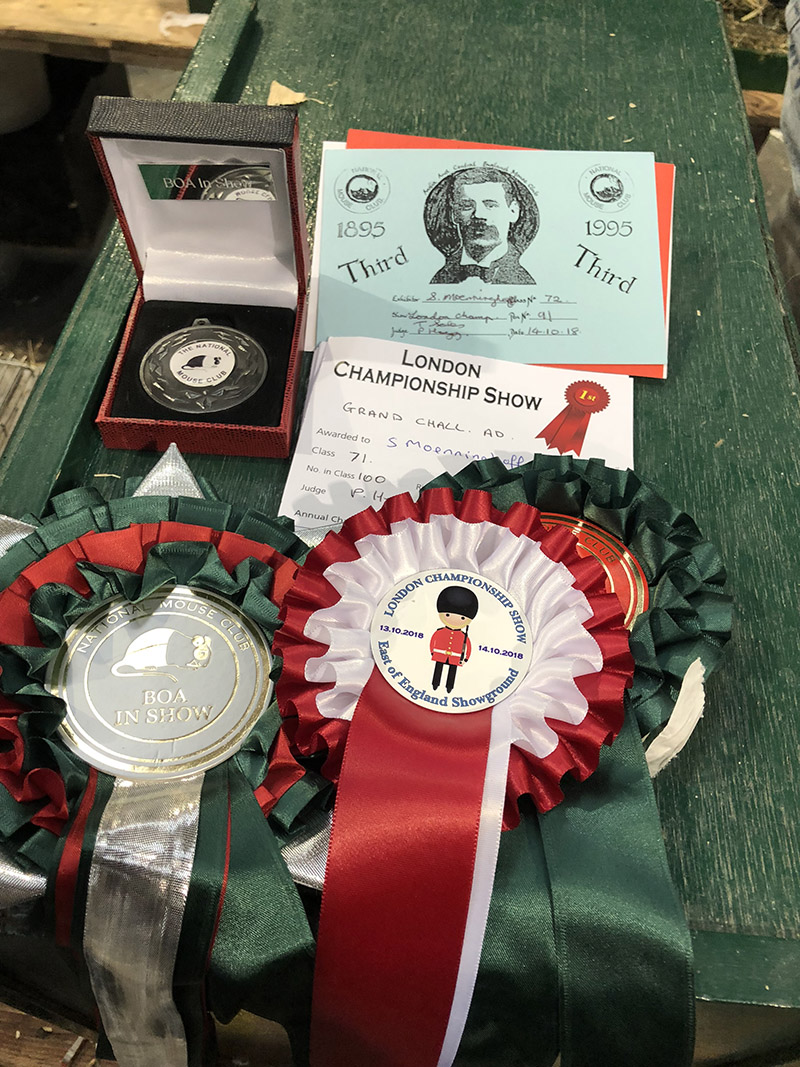
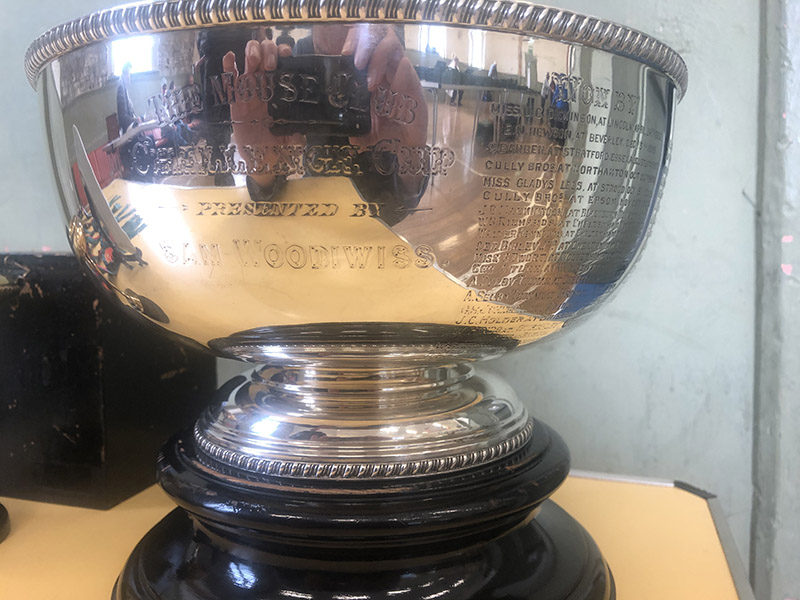
Grand challenge
The Grand Challenge is where the five Best in Section mice (self, tan, marked, satin and AOV) compete for Best in Show. This is judged by the same judges that have judged the individual sections, as a group. Occasionally the judges may disagree, and either the majority (if there are three judges) decides it, or another judge not in the running to win BIS with an exhibit steps in to make a final decision.
As with the section challenges, a second and third place are chosen from the appropriate age group. So if, for example, BIS is awarded to a u/8 mouse, the best u/8 mice from the other four sections are brought out. These may be Best in Section or BOA in Section. Second places to the winners in the challenge classes are looked at in the same way that seconds in the straight classes are looked at when necessary. When the first age group has been judged, the opposite age group is then judged for BOA in Show.
BIS gains four points in the Top Twenty system and BOA three points. These are added to the points the mice have previously won in their sections. Best in Show will therefore accumulate six points, while BOA may gain either five or four points (as it can be a Best in Section or a BOA in Section).
Stewarding
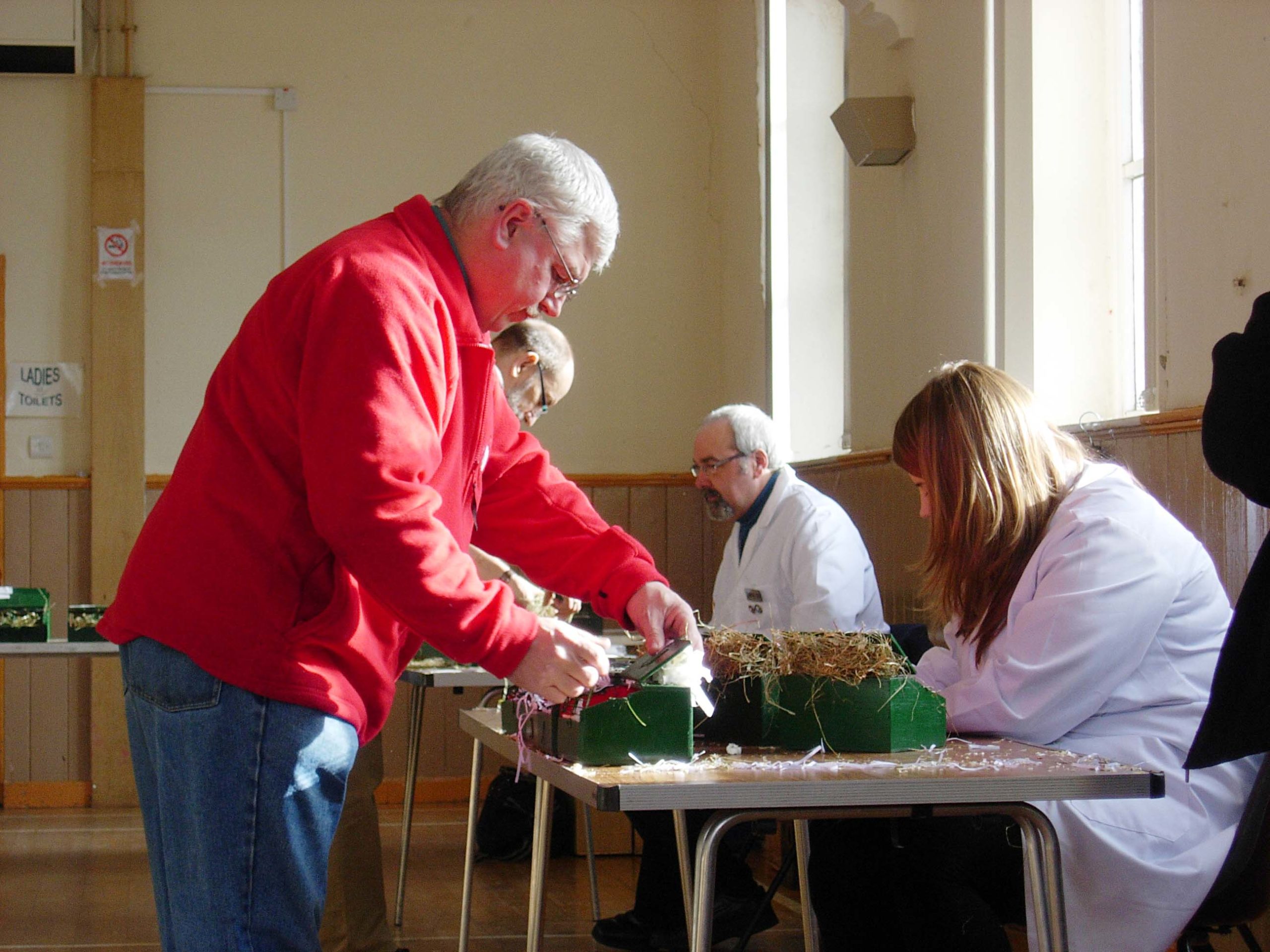
A steward is effectively a judge’s assistant. They collect the Maxeys from the section tables, bring them to the judge and prepare them. This means removing all bedding and placing it behind the correct Maxey, ready for the judge to take the mouse out and inspect it. Care must be taken that the correct bedding remains with each Maxey so that all mice receive bedding and do not get other bedding which may be contaminated (e.g. with mites). When you are stewarding you cannot voice your opinion on a mouse within earshot of the judge. However, you can ask questions after each class has been judged – for example, you might ask the judge to point out good and bad points of a mouse in order to get an idea of the variety.
When the judge has finished judging a class he will tear a slip out of his judge’s book with the results on (winning pen numbers), which must be taken to the show secretary. This slip will then be used to write out prize cards for the correct exhibitor or stud. Remember that the judge does not know who the exhibits belong to and as such you must not mention the owner of a mouse if you know who it is.
Stewarding is the best way to get to see all the mice close up. It will enable you to get an idea of what each variety should look like, its faults and, if you are lucky, what an outstanding example looks like.
The Top Twenty points system
The NMC in the UK has a points system called the Top Twenty, which is published in the club newsletter, NMC News as well as on the Leader Board. The system keeps track of the achievements of individual exhibitors and studs by awarding them a number of points per significant placing in a show. Over the showing year (September – September) these points are added up and a Top Twenty table of exhibitors is created. Points are adjusted for those who have judged at a show (and therefore cannot exhibit).
Best in Show receives four points, Best Opposite Age in Show three points, Best in Section two points and Best Opposite Age in Section one point. Points are cumulative, so if, for example, you win BIS you will receive six points because you have won Best in Section in order to continue to the Grand Challenge to compete for BIS
Why strive to win the Top Twenty?
Coming first in the Top Twenty usually means that you have won quite a few awards throughout the year. You may have won less Best In Shows than another exhibitor, but you will have exhibited mice that are consistently good. For example, one exhibitor may have won Best In Show three times in the show year, and you have only won once. However, you could still be at a higher position in the Top Twenty because you have also won Best Opposite Age in Show, nine Best In Section and three Best Opposite Age in Section. The first exhibitor would have 18 points (three times six points, with two for Best in Section and another four for BIS each time) and the second 32 points (one times six points, one times five points, nine times two points and three times one point).
A good way to rank near the top of the Top Twenty is to exhibit mice in all five sections. That way you have a better chance of your mice winning the various Best In Sections and going forward to Best In Show. I have attended a couple of shows where one exhibitor won four of the five sections! This is very uncommon but a great achievement.
Of course, exhibiting mice is not a good way to make money. Prize money is very low at most shows, except at Cup Shows where the BIS may get £20. Breeders of mice do it for the enjoyment, the competition and of course, the reputation/respect. Winning the Top Twenty gives the winner a feeling of satisfaction and the knowledge that he or she has produced some good quality mice that year. It may also create demand for that person’s mice as breeding stock because they have demonstrated their quality by accumulating points.
Judging NMC shows in the UK
- There is a panel limited to 30 judges
- An individual must be an NMC member for three years or more before they can be nominated
- Members are voted in as a judge by the entire NMC membership during the annual elections
- Judges have generally won multiple awards i.e. best in section, BOA and BIS (this proves that they are able to tell a good quality mouse from a poor mouse)
- Those wishing to become judges will have stewarded multiple times (a steward is basically a judge’s assistant who brings all the maxeys to the table, removes the bedding, takes the judging slips to the Show Secretary etc.)
- The usual number of judges is two for a larger show; for smaller shows with fewer entries there will be one judge for all the sections.
- When you are judging you cannot also show mice
- White coats (similar to those worn by lab technicians) are worn during judging
- At a typical show, a judge will judge either two or three sections (from self, marked, tan, satin and AOV). Each section consists of around a dozen classes (depending on the size of the show) including adults and u/8 (under eight weeks). For example, a self section might contain an adult and u/8 class for each of the following varieties: PEW, BE cream, black, champagne/silver, red/fawn and AOV self. Any self varieties not named in their own class (e.g. blue, chocolate, lilac) are shown in the AOV self class.
- Show Secretaries provide a judging book for each judge, which has separate pages for each class showing the pen numbers of the exhibits in that class. Judges use this book to record their comments about each mouse and the places they were awarded if any (i.e. first, second, third). There is a duplicate tear-off strip at the right hand side of each page where results are copied, torn off and given to the Show Secretary so that they can write prize cards and fill in the show paperwork (this is later given to the Cup Secretary). The judge keeps the main part of the book with the comments in so that they can fill in a show report to be published in the NMC News
- Only the top three mice in a class are placed. Many years ago when there were bigger classes at shows, up to seven places were awarded (first, second, third, fourth,
very highly commended, highly commended and commended). - Judges often keep a large soft brush (like a blusher make up brush or shaving brush) or a small silk cloth on the table in case they need to brush dust off the mouse’s coat or check to see if a mark is dirt/debris or a flaw etc.
- Many judges also keep hand sanitizer and tissues/wet wipes on their table to clean their hands in between mice
- A judge does not have to place a mouse even if it would potentially receive a placing by default e.g. second place because there were only two mice in the class. If they deem that mouse not good enough to qualify for an award they can mark it n/a (on the Maxey label and show report)
- If a judge disqualifies a mouse it is usually marked on the Maxey with “disq.” and often the reason e.g. mites. If the reason it has been disqualified has the potential to adversely affect other mice, such as a communicable illness, then the steward will ascertain the owner of the mouse by looking at the label underneath the Maxey or asking the Show Secretary. They will then return the mouse to its owner and ask that it be removed from the entry tables/venue
Unstandardised Mice
What is an unstandardised mouse?
An unstandardised mouse exhibits a characteristic that is not described in the standards laid down by the National Mouse Club. It may be of a different colour, coat pattern or even physical conformation (e.g. manx, hairless, dumbo) from those varieties of mice that are currently accepted and can be shown in normal classes at organised shows. New mutations may be standardised in the future in accordance with proper NMC procedure upon application to the Executive Committee and trialling of the variety on the show bench (unstandardised classes, possibly leading to a provisional and then full standard being drawn up and accepted).
Where can unstandardised mice be shown?
These mice can only be entered in special unstandardised classes, which are not on the schedule for every show. There may only be a few of these classes per show year, so an exhibitor may have to wait several months before he can show the variety he has been working with (or the surprise that has turned up in a litter).
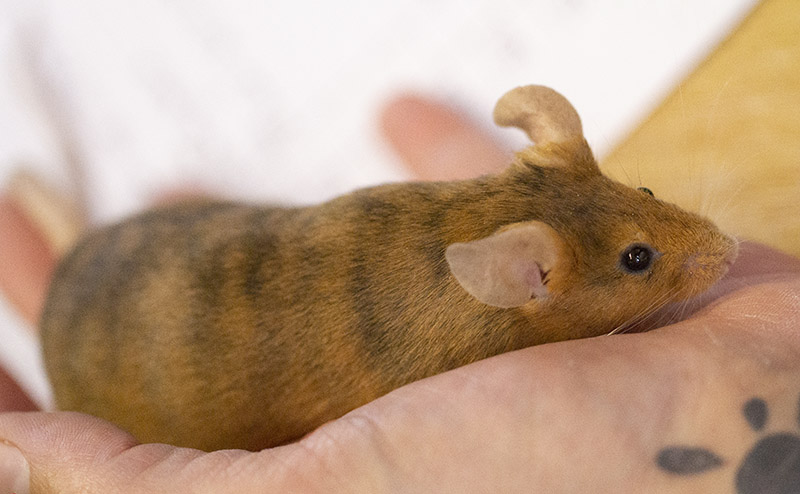
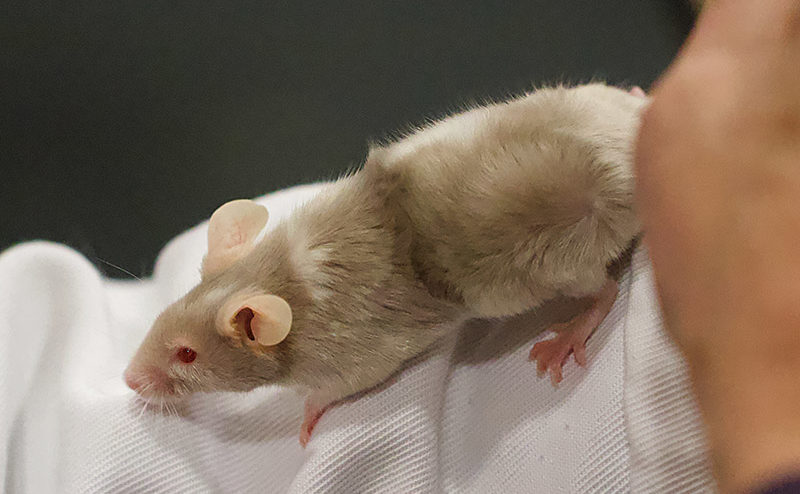
What sort of qualities make an unstandardised mouse worth exhibiting?
Any mouse that an exhibitor wishes to show as unstandardised successfully (i.e. that may be granted a provisional standard) must be significantly different from an existing variety to merit a separate standard. For example, many people are against the standardisation of the colour known as ‘stone’ because it is a by-product of breeding black eyed creams and is not considered distinct enough.
It may be that a new combination of existing varieties is put forward, such as a chinchilla or fox rumpwhite or a banded fox. Some people argue against these examples being standardised because the white belly means that the demarcation line under the mouse is no longer visible.
In the UK the more extreme mutations (e.g. hairless, manx and dumbo) are not standardised. It is not likely that these will be granted a provisional standard in the near future in the UK.
FAQ
When you join the NMC you will receive a yearbook with the contact details of NMC members, as well as adverts from the more active exhibitors.
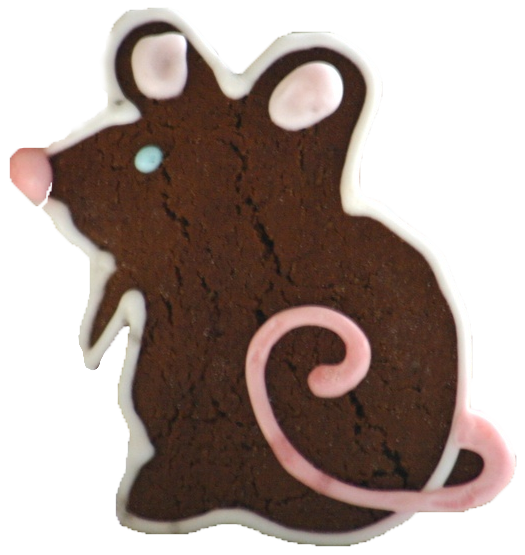 We use cookies to ensure that we give you the best experience on our website. If you continue to use this site we will assume that you are happy with it.
We use cookies to ensure that we give you the best experience on our website. If you continue to use this site we will assume that you are happy with it.